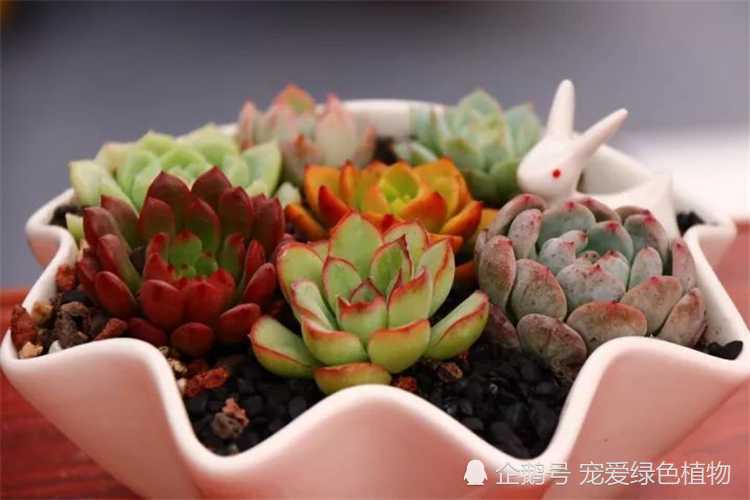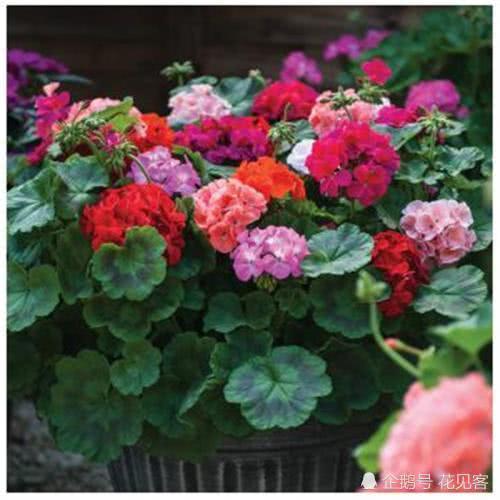These five factors are related to the hairy roots of succulent plants. Beginners are worth seeing.

These "five factors" are related to the "hairy roots" of succulent plants, and it is worth seeing for beginners.
If you don't understand the principle of succulent root germination, how can you raise meat well? There are several basic principles of plant hairy roots. Let's talk about it in a superficial way:
1. Suitable air humidity. Air humidity does not refer to soil moisture.
Relatively high humidity, such as 99% saturated air humidity, plants can even germinate roots in the air without contact with soil media.
Many people fail in humidity, not because of insufficient air humidity (in general balcony environment, the percentage of plum rain season can reach 80%, the average time is generally about 55%, and the north may be drier), so it is easy to cuttage and propagate successfully in closed greenhouse.
And many people walk into another misunderstanding, that is, high soil moisture.
In fact, it is not very large, because the roots do not absorb water or even have no roots at that time, and the soil is maintained for a certain period of time because of the high humidity of the air attached to the plants.
2. Appropriate hormone levels
We often dry plants properly in the early stage, one reason is to heal the wound, the other is to let the plant collapse properly, when the plant collapses, it loses water, but the hormone concentration in the body is increased, and the hormone level is needed for root germination.
Some plant hormone levels are low, need to supplement naphthalene acetic acid rooting powder, such as black jade cuttings properly smeared rooting powder will improve the effect, while other plants with high hormone levels that are easy to sprout roots, such as triangular poles, you smear rooting powder but it does not germinate, because excessive naphthalene acetic acid will have an inhibitory effect.
3. Proper lighting
We all know that light promotes plant fluid flow and transpiration, but as mentioned earlier, when the light intensity is high, the plant hormone flows to the top of the plant, rather than the base where it needs to take root.
Light intensity can cause this problem, making it difficult for some plants to germinate, such as 12 rolls and cactus balls, while tequila has a fixed light intensity to germinate better.
So it depends on the specific species, the light intensity also causes plant transpiration, to put it bluntly, that is, plants that are sun-dried and collapse to a certain extent, the level of collapse hormone is sufficient, and there is no root system to replenish water, and the body fluid is almost solidified. it's just like a high level of hormone.
4. Suitable hairy root tissue
If you take a petal to cuttage, it will definitely not take root, as we all know, but we often think that where we can cut, many of them are difficult to cut, such as the old woody stem, where the plant tissue is too aging and it is difficult to sprout new roots.
On the other hand, too small tender tissues are not easy to germinate and survive. Although these tissues are young and active, they do not store enough nutrients and die before they germinate roots, so it is necessary to choose a suitable tissue here.
5. Good wound healing
After the wound is cut off, all kinds of bacteria may infect the wound, and when they are seriously infected, the tissue fester. Although you can see that they are only infected on the surface, there may be a lot of hyphae inside.
Those bacteria produce toxins that affect healing and germination, so good wound treatment is critical. Infection sometimes has a great impact on germination, and sometimes cuttings do not take root for a long time, or even suddenly rot away, the reason is infection.
Therefore, the treatment after cutting is very important, after the root tissue, the root system shrinks and heals or even falls off, the wound left behind is smaller and easier to heal, and the reason why leaf insertion is difficult is that the leaf wound is more likely to be infected.
Cut off the part, you have to dry, which is different from cutting, when the air drying is conducive to the safety of the tissue.
If some juicy plants, you also need to use paper towels to dry the wound in time, so as to avoid the growth of bacteria and mold caused by the discharge of juice from its non-healing, which will affect the wound, the appropriate cold-dried plants, and even when the cut has a certain degree of collapse, cutting is the best.
- Prev

Balcony flowers on the choice of it has a balcony Xi Shi said super beautiful is worth starting with
With the improvement of living standards, more and more people have joined the army of growing flowers, and flower friends who have balconies prefer to make it into a beautiful little garden. Today, Hua er introduces a kind of flower, which is called "balcony west."
- Next

The withering and rebirth of a leaf in autumn
Speaking of autumn, there is always a wealth of sadness when talking about fallen leaves. However, can they only be accompanied by sapropelic mud after falling leaves? It's not. Fallen leaves are Ouyang Xiu's "Bamboo in the late Night strikes Autumn Rhyme, thousands of leaves are hated"; it is Gong Zizhen.
Related
- Wuhan Hospital Iron Tree Blooming Result Was Instantly Frightened by the Gardener Master
- Which variety of camellia is the most fragrant and best? Which one do you like best?
- What is the small blue coat, the breeding methods and matters needing attention of the succulent plant
- Dormancy time and maintenance management of succulent plants during dormancy
- Minas succulent how to raise, Minas succulent plant pictures
- What are the varieties of winter succulent plants
- How to raise succulent plants in twelve rolls? let's take a look at some experience of breeding twelve rolls.
- Attention should be paid to water control for succulent plants during dormant period (winter and summer)
- Watering experience of twelve rolls of succulent plants
- Techniques for fertilizing succulent plants. An article will let you know how to fertilize succulent plants.

